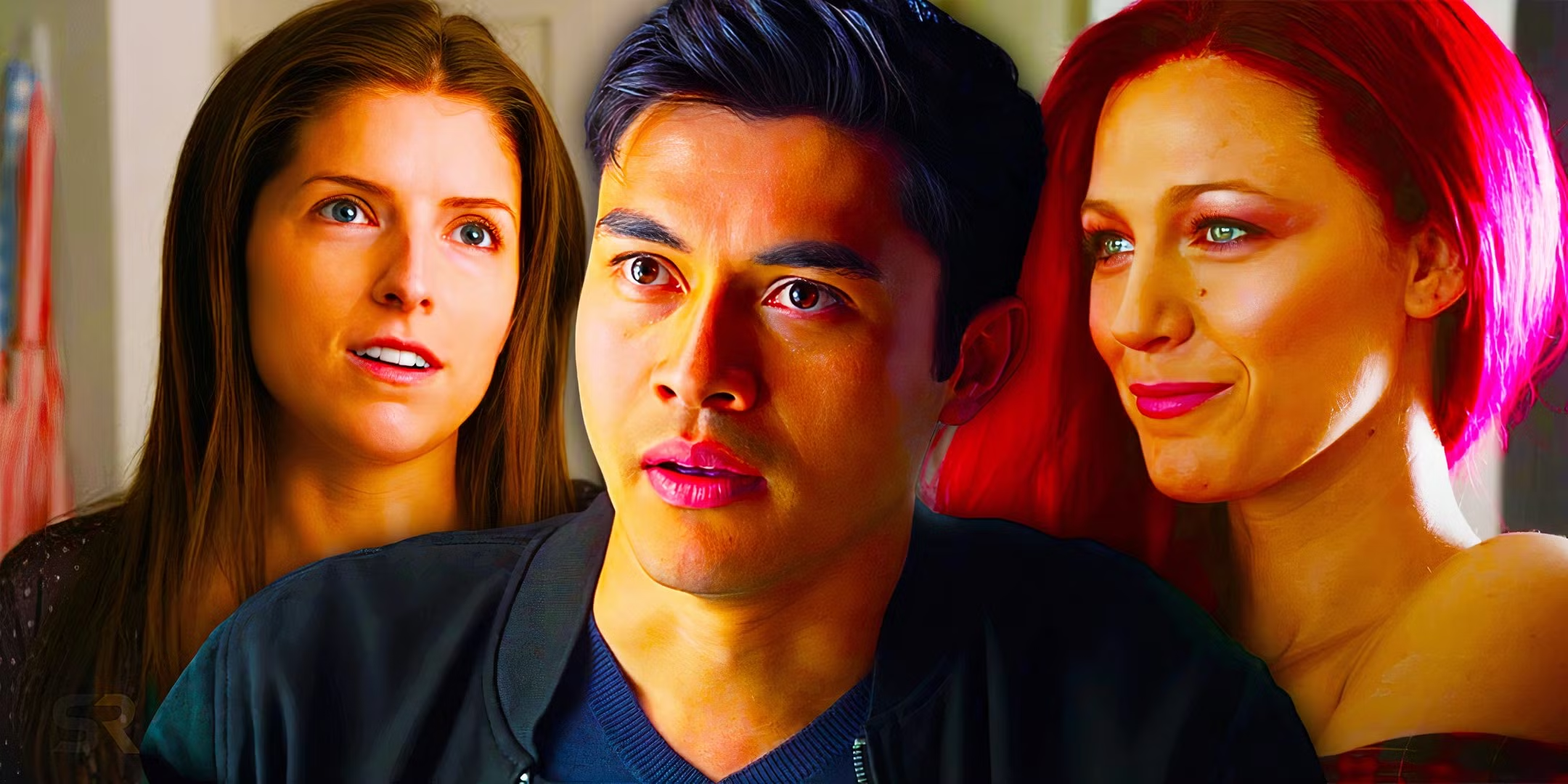A Simple Favor True Story — the claim vs. the reality
If you stumbled in wondering whether “A Simple Favor True Story” means the movie actually happened, here’s the clean, spoiler-aware answer: it didn’t. A Simple Favor is not based on any specific real case. It’s adapted from Darcey Bell’s 2017 novel of the same name, a contemporary thriller steeped in suburban secrets, mommy-vlog polish, and a gleeful taste for deception. Multiple studio and press write-ups have made this clear: the story is fictional, even if its sleek details feel ripped from tabloid headlines.
Why, then, does the “A Simple Favor True Story” question come up so often? Partly because director Paul Feig lets the movie occupy that glossy overlap between crime drama and satire. The film speaks the language of modern scandal—missing moms, insurance schemes, live-streamed confessions—so fluently that viewers assume a real case must be lurking underneath. But the bones of the tale are pure invention, sharpened by a filmmaker better known for comedy and driven by performances that make lies feel dangerously plausible.
A quick factual snapshot helps ground any “A Simple Favor True Story” debate. The film debuted in U.S. theaters on September 14, 2018, stars Anna Kendrick, Blake Lively, and Henry Golding, cost roughly $20 million, and earned about $97.6 million worldwide. Those are hard numbers—cinematic facts, not lore—and they underscore how a stylish mid-budget thriller can punch far above its weight when the hook is irresistible.
A Simple Favor True Story — the book-to-film origins
At the root of the movie is Bell’s page-turner, built from alternating voices and curated secrets. “A Simple Favor True Story” searches often miss this literary DNA: Bell didn’t pluck a headline and fictionalize it; she engineered a domestic noir where friendship curdles, identity bends, and a simple favor becomes a trap door. In interviews, Bell has talked about the adaptation process and how the transition to screen kept the book’s tension while embracing the film medium’s own flair.
Paul Feig’s involvement is an important “true fact.” Best known for comedy, he leans into tone as much as plot—soft jazz cues, razor suits, martinis at four—that calibrate our expectations. That tonal alchemy is why the “A Simple Favor True Story” rumor mill spins: the world feels lived-in, modern, and legible, even when the story zigzags into operatic twists. The casting, too, fuels the effect. Lively’s Emily is icy glamor married to menace; Kendrick’s Stephanie is perky sincerity shading into steel. Both play truth as a mask—one to hide, one to heal—which makes us scan every detail like detectives.
As with many popular thrillers, the movie’s marketing amplified the sense of mystery. Remember the Instagram stunt where Lively scrubbed her grid and followed only “Emily Nelsons”? It’s an emblematic example of how the production blurred fiction with the textures of real digital life, encouraging the audience to sleuth even before the opening titles. That campaign shaped how people framed the film: stylish, current, and plausibly “real.”
A Simple Favor True Story — twists, characters, and the ‘true facts’ behind them
Let’s talk twists, because that’s where “A Simple Favor True Story” speculation tends to spike. Spoilers ahead.
The central engine is Emily’s disappearance and revelation: Emily Nelson is an identity assumed by Hope McLanden, who has a twin sister, Faith. The plot unspools through insurance questions, a body in a lake, and a live-streamed confession. The “true facts” as the film presents them are these: Faith tries to extort Hope/Emily over a deadly family secret; Emily drowns Faith in a Michigan lake and stages her own death; eventually, Stephanie exposes Emily on camera. None of this matches a documented real-world case—it’s the film’s constructed timeline, not reportage.
Names matter in this maze. The movie (and updated coverage ahead of the 2025 sequel) identifies Emily’s birth name as Hope, her twin sister as Faith, and—crucially—ties their past to arson and an abusive father. It’s the melodramatic backbone that explains later ruthlessness. The intricacy of those backstories reads “true” enough to feel reported but is, again, fictional world-building.
Even the finale’s viral element—the mommy-vlogger live-stream that seals Emily’s downfall—mimics the way real scandals unfold online. That’s craft, not citation. It leverages familiar platforms (vlogs, livestreams) to make the narrative feel anchored in our feeds. If “A Simple Favor True Story” keeps trending, it’s because the movie understands how confession, performance, and proof now braid together in public.
A Simple Favor True Story — why it feels real (and why it isn’t)
So why does a fully fictional story keep getting treated like a docudrama? First, the movie’s suburban micro-realism. The school pick-up lines, funding drives, workplace politics, and brisk cocktail hours are all rendered with observational bite. Second, the crimes themselves—insurance schemes, identity fraud, fake deaths—borrow techniques you’ve likely seen scattered across true-crime anthologies. The film stitches those familiar modules into a single, heightened caper. That collage of plausibles tricks our brain into applying a “based on a true story” label that doesn’t belong there.
Third, the timing of its streaming surges has periodically thrust it into a “real or not?” conversation with a fresh audience. When a sleek thriller jumps to the top of a platform’s charts, new viewers arrive primed by the platform’s curation and the internet’s rumor economy. Many aren’t aware it’s from a novel; they infer a headline origin story and go searching. Coverage around recent streaming waves has re-reiterated the point: compelling, yes; true story, no.
Finally, tone. Feig and screenwriter Jessica Sharzer keep a foot in satire and a foot in suspense. That tonal split lets scenes play like observational comedy one moment and depositions the next. It’s a clever framing that keeps “A Simple Favor True Story” chatter alive without ever crossing into fact. The movie respects how modern audiences parse truth claims; it sprinkles breadcrumbs of verisimilitude (email headers, legalese, news crawls) while remaining a confection.
A Simple Favor True Story — legacy, sequel, and the current status of the saga
Here’s where the record stands, and these are the “true facts” you can carry forward when someone asks about an “A Simple Favor True Story.” The 2018 film succeeded commercially and critically for a mid-budget thriller, helped by repeat-watch buzz and fashion-forward iconography. In 2025, a sequel—Another Simple Favor—arrived with Kendrick and Lively returning. The continuation expands the operatic family tree and doubles down on identity games, reminding everyone that this is a heightened universe that nods to reality but is not reporting it.
The sequel’s very existence underlines the point: this is a fictional canon, not a case file. Sequels by nature remix their worlds, escalate their twists, and test their characters in new locales (Capri, anyone?). That elastic storytelling is a hallmark of genre narratives, not true-crime docudramas tethered to a single set of facts. If you need one sentence to settle debates, try this: “A Simple Favor True Story isn’t a thing—the story’s power comes from how convincingly it fakes the texture of truth.”
Below is a compact, spoiler-aware “true facts review” you can reference the next time friends argue about what’s real:
- Is it based on a true story? No. It’s based on Darcey Bell’s 2017 novel.
- Did the filmmakers claim real-world inspiration? No specific case; any resemblance is genre echo, not adaptation of a real event.
- What are the core twists? Emily fakes her death, the twin backstory, the livestreamed confession, and the insurance subplot. All are fictional constructs.
- How did it perform? About $97.6M global box office on a $20M budget.
- What’s new? A 2025 sequel extends the saga, further proving it’s a narrative playground, not a true case.
FAQs — A Simple Favor True Story (20 quick Q&As)
1) Is A Simple Favor based on a true story?
No. “A Simple Favor True Story” is a popular search phrase, but the film is adapted from Darcey Bell’s novel and isn’t drawn from a specific real case.
2) What’s the book-to-film connection?
The 2018 movie follows Bell’s 2017 novel, reshaping some plot beats while preserving the core friendship-turned-mind-game dynamic.
3) Which parts feel “real” and why?
Everyday details—PTA fundraisers, vlogging, and office politics—mirror modern life, lending a realistic texture to an otherwise heightened thriller.
4) Did any true-crime case inspire Emily’s scheme?
No single case has been cited by the author or studio. The story borrows familiar genre elements (insurance fraud, identity scams) without tracing to one headline.
5) What are the factual basics—release, cast, box office?
Released Sept. 14, 2018; stars Anna Kendrick, Blake Lively, Henry Golding; grossed about $97.6M on a $20M budget.
6) Why do people Google “A Simple Favor True Story” after watching?
Because the film cleverly blends noir intrigue with day-to-day realism and digital-age details like livestreams and mommy vlogs, which feel news-adjacent.
7) Is the twin storyline factual?
It’s part of the fictional plot. Emily (born Hope) and her twin Faith have a dark past that explains later crimes; it’s character backstory, not reportage.
8) How exactly does the ending work?
Stephanie livestreams a confrontation that captures Emily’s confession, leading to Emily’s arrest—an audacious, fictional twist that capitalizes on modern media.
9) Was the body in the lake a real-case reference?
No. The lake discovery is a narrative device that accelerates suspicion and grief in the film’s middle act.
10) What did critics say about the tone?
Many praised the “mommy noir” blend of style and suspense, noting its campy twists and star performances.
11) Did the marketing play into the mystery?
Yes—famously, Blake Lively wiped her Instagram grid, following only “Emily Nelsons,” stoking buzz before the release.
12) Is there a sequel, and does it change the ‘true story’ equation?
Yes, Another Simple Favor (2025) expands the saga with new identity games—more proof this is an elastic fictional universe, not a true case.
13) Where can I read the author’s perspective on the adaptation?
Darcey Bell has discussed the adaptation experience, offering insight into how the film diverges and converges with her vision.
14) Is the insurance plot realistic?
Pieces of it reflect real insurance-fraud headlines in the abstract, but the film’s scheme is designed for drama, not legal accuracy.
15) Why does the movie seem “timely” years later?
Streaming revivals introduce new audiences who live online; its themes—image management, performative truth—are even more resonant now.
16) Who composed the score and why does it matter?
Theodore Shapiro’s playful-menacing cues amplify the tonal tightrope, keeping scenes feeling credible yet slyly heightened.
17) Where is the story set and shot?
The plot is set in Connecticut; principal photography took place in Toronto, a common stand-in for U.S. suburbs.
18) Did the epilogue’s “Stephanie solves cold cases” actually happen?
No—like the rest, it’s a cheeky narrative coda that fits the film’s satirical streak.
19) What makes Emily such a sticky character in pop culture?
She’s fashion-armored ambiguity: witty, ruthless, and styled to the nines—an archetype that invites endless theories despite being entirely invented.
20) Bottom line—how should I answer friends who insist it’s true?
Say: “A Simple Favor True Story isn’t real. It’s a fictional thriller from a novel, crafted to feel true in the social-media era—and that’s its magic.”

